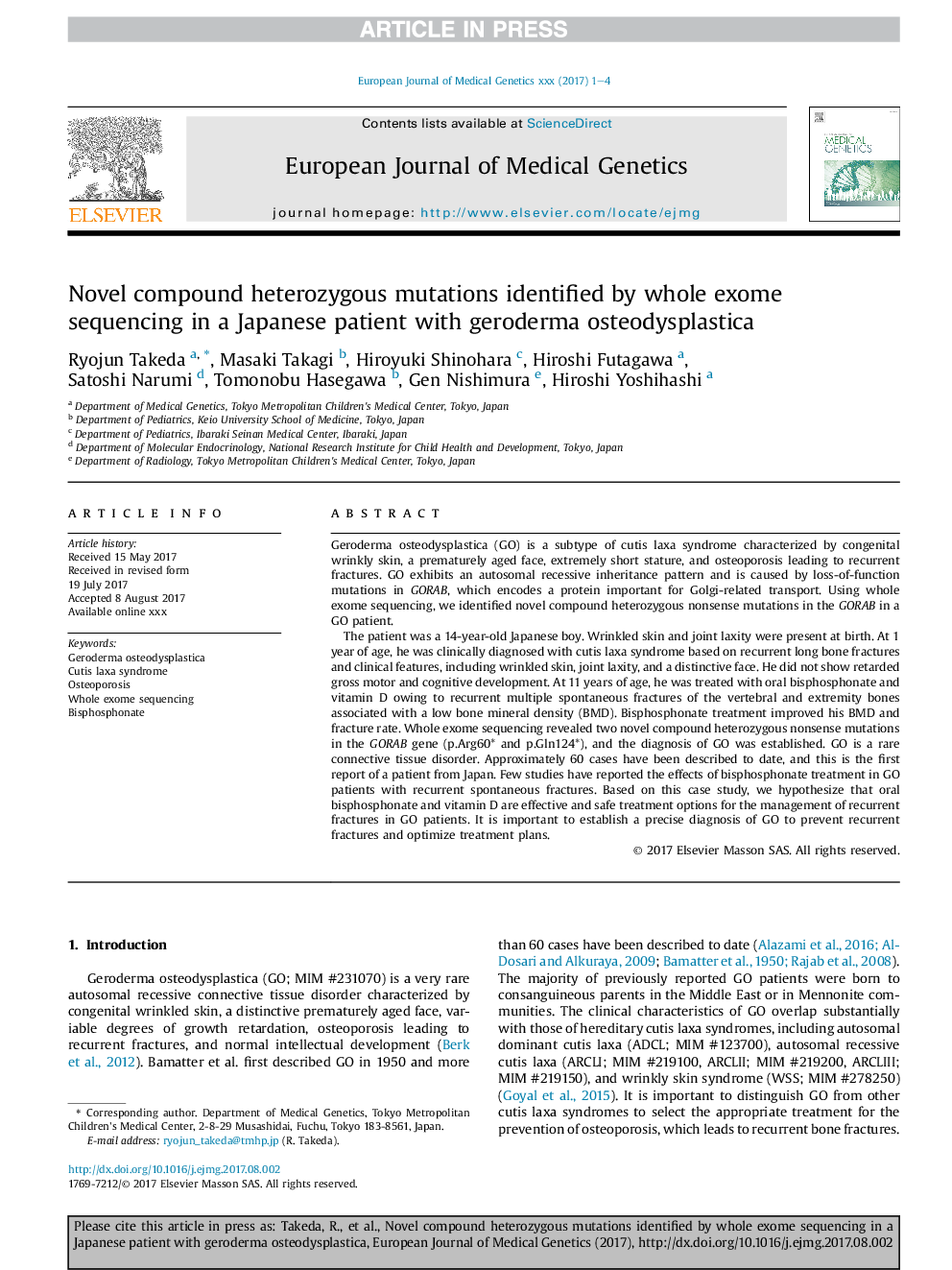| Article ID | Journal | Published Year | Pages | File Type |
|---|---|---|---|---|
| 8644352 | European Journal of Medical Genetics | 2017 | 4 Pages |
Abstract
The patient was a 14-year-old Japanese boy. Wrinkled skin and joint laxity were present at birth. At 1 year of age, he was clinically diagnosed with cutis laxa syndrome based on recurrent long bone fractures and clinical features, including wrinkled skin, joint laxity, and a distinctive face. He did not show retarded gross motor and cognitive development. At 11 years of age, he was treated with oral bisphosphonate and vitamin D owing to recurrent multiple spontaneous fractures of the vertebral and extremity bones associated with a low bone mineral density (BMD). Bisphosphonate treatment improved his BMD and fracture rate. Whole exome sequencing revealed two novel compound heterozygous nonsense mutations in the GORAB gene (p.Arg60* and p.Gln124*), and the diagnosis of GO was established. GO is a rare connective tissue disorder. Approximately 60 cases have been described to date, and this is the first report of a patient from Japan. Few studies have reported the effects of bisphosphonate treatment in GO patients with recurrent spontaneous fractures. Based on this case study, we hypothesize that oral bisphosphonate and vitamin D are effective and safe treatment options for the management of recurrent fractures in GO patients. It is important to establish a precise diagnosis of GO to prevent recurrent fractures and optimize treatment plans.
Related Topics
Life Sciences
Biochemistry, Genetics and Molecular Biology
Genetics
Authors
Ryojun Takeda, Masaki Takagi, Hiroyuki Shinohara, Hiroshi Futagawa, Satoshi Narumi, Tomonobu Hasegawa, Gen Nishimura, Hiroshi Yoshihashi,
